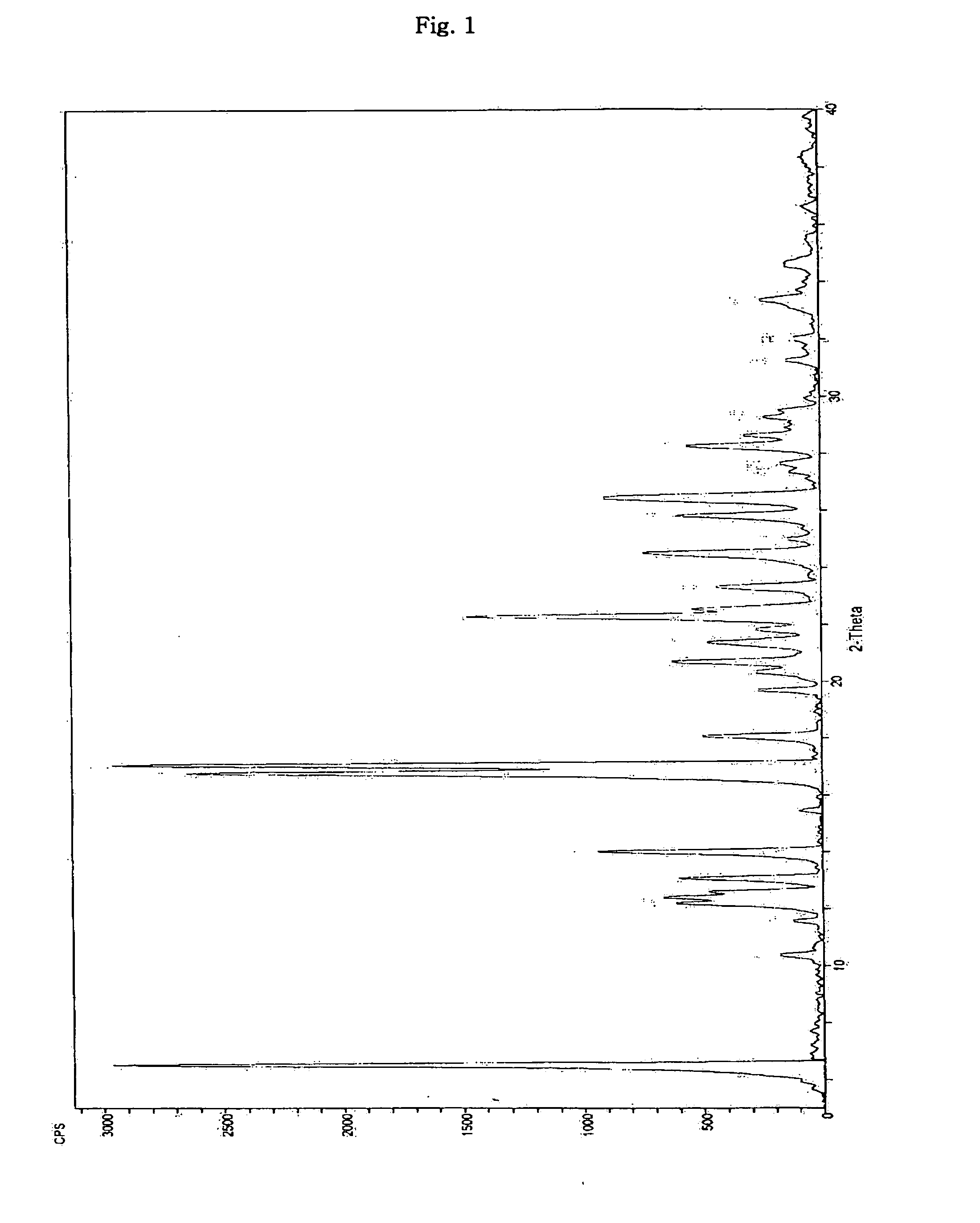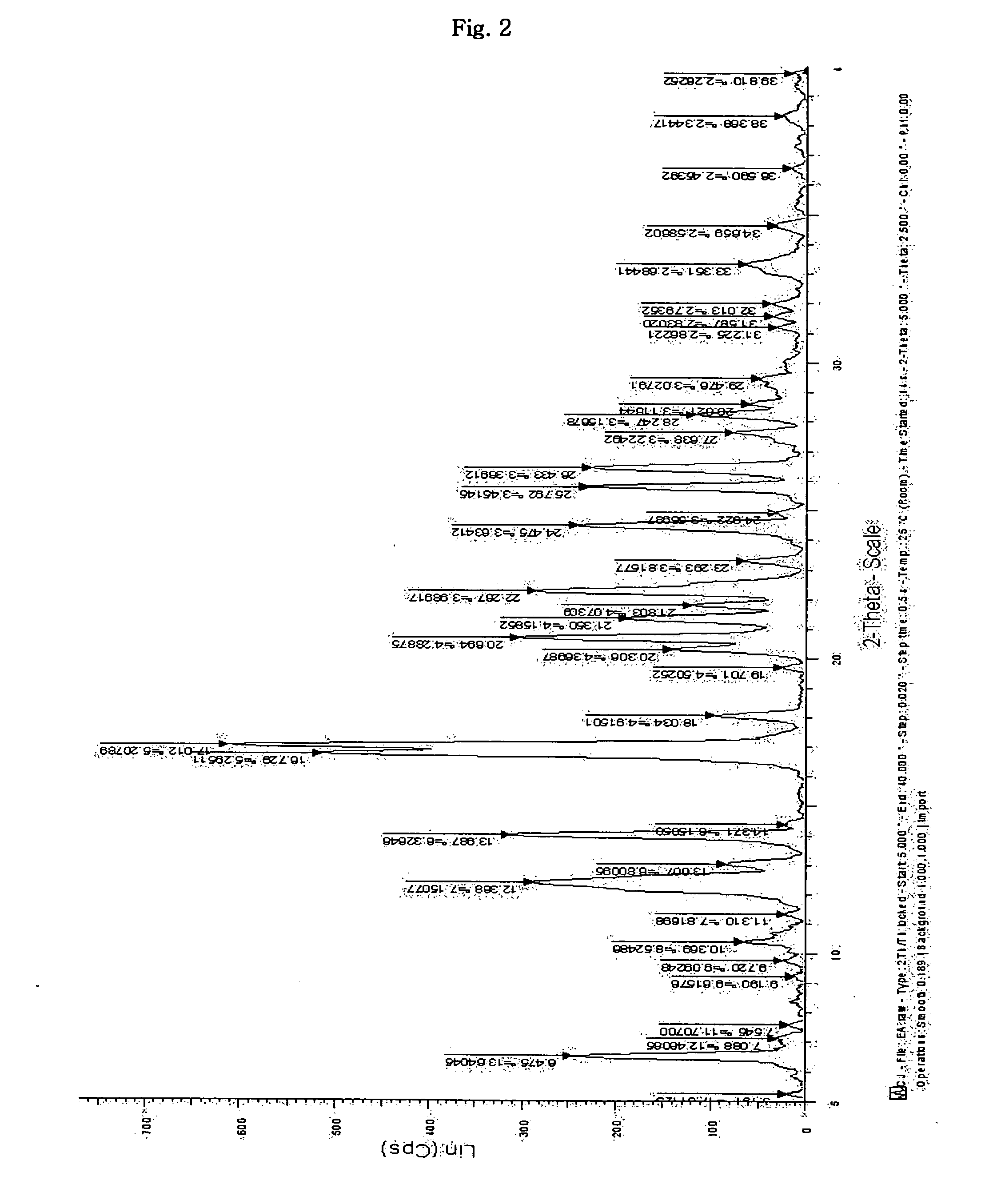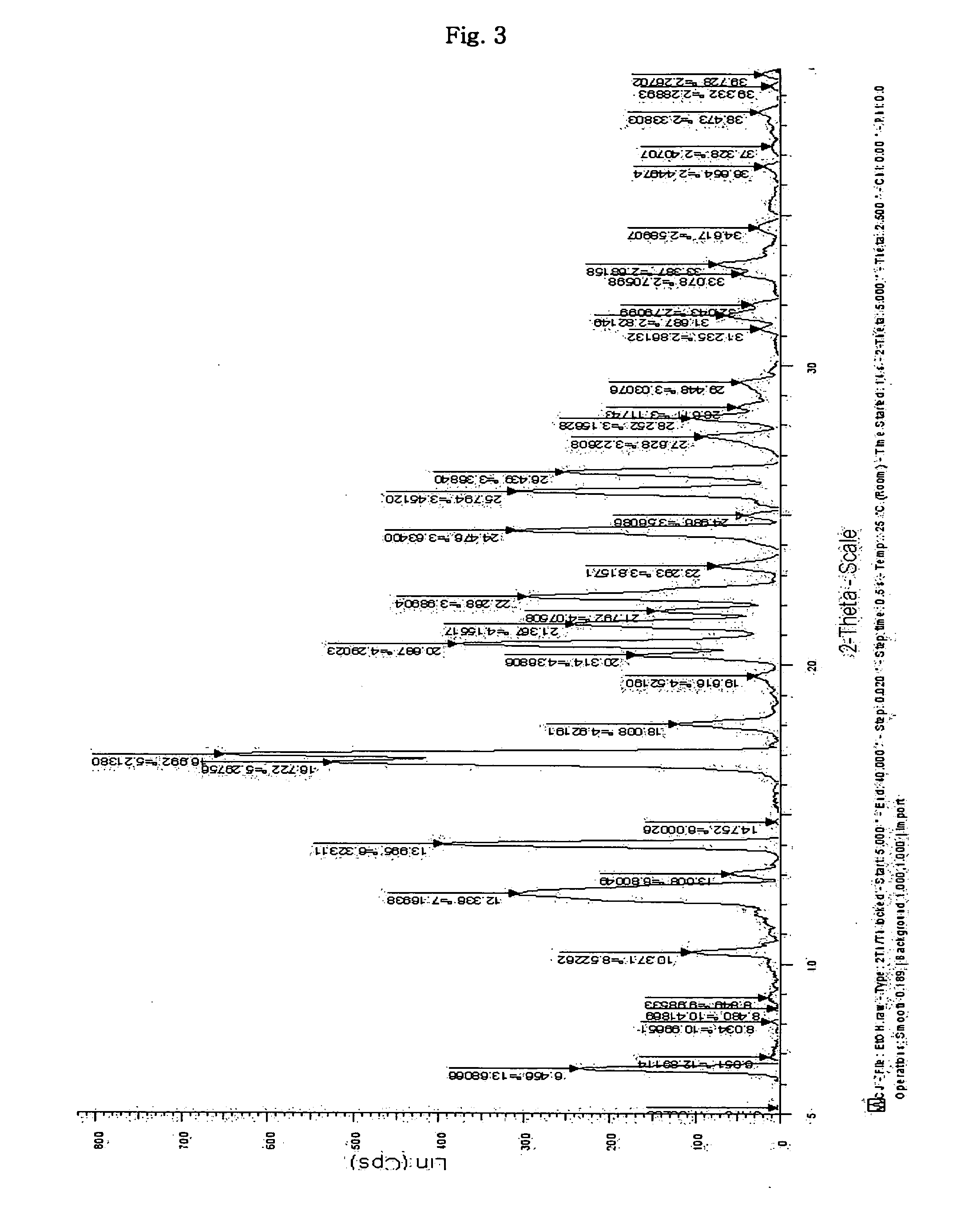Inorganic acid salts of sibutramine
a technology sibutramine, which is applied in the field of inorganic acid salts of sibutramine, can solve the problems of difficult to achieve such consistency, and achieve the effects of good physicochemical properties (solubility, non-hygroscopicity and stability), and high solubility
- Summary
- Abstract
- Description
- Claims
- Application Information
AI Technical Summary
Benefits of technology
Problems solved by technology
Method used
Image
Examples
reference example 1
Preparation of Sibutramine Hydrochloride Monohydrate
[0064] Sibutramine hydrochloride anhydrate was prepared according to a method described in Korean Pat. No. 2098602 or Korean Pat. Publication No. 90-00274. Then, according to a method described in British Pat. No. 2184122 or Korean Pat. Publication No. 94-08913, 10 g of the prepared sibutramine hydrochloride anhydrate was dissolved in a boiling mixture of 110 ml acetone and 1.2 ml water, and the resulting solution was hot-filtered and distilled to remove 80 ml of the solvent, thus reducing the volume of the filtrate. The concentrate was filtered to recover a generated solid. The solid was vacuum-dried, thus obtaining 9.2 g (yield: 87%) of the compound of Chemical Formula 2, which had a melting point of 195° C.
example 1
Preparation of Sibutramine Hydrogen Sulfate Using Acetone
[0066] Sibutramine (17.1 g, 0.06 mol) was dissolved in 150 ml of acetone with agitation. After the solution was adjusted to 25° C., 6.0 g of concentrated sulfuric acid was diluted with 50 ml of acetone and added to the solution. Crystals formed slowly. The resulting mixture was agitated at 25° C. for 2 hrs and further agitated at 4° C. for 1 hr. The generated solid was recovered by filtration under pressure, washed with 30 ml of acetone, and vacuum-dried at 40° C., thus obtaining 21.0 g (yield: 91%) of a target compound.
TABLE 1Elemental analysis(C17H28ClNO4S)Unit (%)Measured valueC: 54.35, H: 7.68, N: 3.82, O: 17.00, S: 8.58Theoretical valueC: 54.03, H: 7.47, N: 3.71, O: 16.93, S: 8.4
[0067] Melting point (DSC): 212.8° C.
[0068]1H-NMR (δ, DMSO-d6): 8.39 (1H, br, s), 7.54˜7.49 (4H, dd), 3.75 (1H, t), 2.83 (3H, d), 2.5 (2H, d), 2.33 (2H, t), 2.13 (3H, d), 1.90 (1H, m), 1.70˜1.67 (2H, m), 1.40 (2H, m), 1.00 (6H, t)
example 2
Preparation of Sibutramine Hydrogen Sulfate Using Ethyl Acetate
[0069] Sibutramine (17.1 g, 0.06 mol) was dissolved in 150 ml of ethyl acetate with agitation. After the solution was adjusted to 25° C., 6.0 g of concentrated sulfuric acid was diluted with 50 ml of ethyl acetone and added to the solution. Crystals formed slowly. The resulting mixture was agitated at 25° C. for 2 hrs and further agitated at 4° C. for 1 hr. The generated solid was recovered by filtration under pressure, washed with 50 ml of ethyl acetate, and vacuum-dried at 40° C., thus obtaining 21.5 g (yield: 94%) of a target compound.
[0070] Melting point: 212° C.
PUM
| Property | Measurement | Unit |
|---|---|---|
| pH | aaaaa | aaaaa |
| pH | aaaaa | aaaaa |
| pH | aaaaa | aaaaa |
Abstract
Description
Claims
Application Information
 Login to View More
Login to View More - R&D Engineer
- R&D Manager
- IP Professional
- Industry Leading Data Capabilities
- Powerful AI technology
- Patent DNA Extraction
Browse by: Latest US Patents, China's latest patents, Technical Efficacy Thesaurus, Application Domain, Technology Topic, Popular Technical Reports.
© 2024 PatSnap. All rights reserved.Legal|Privacy policy|Modern Slavery Act Transparency Statement|Sitemap|About US| Contact US: help@patsnap.com










